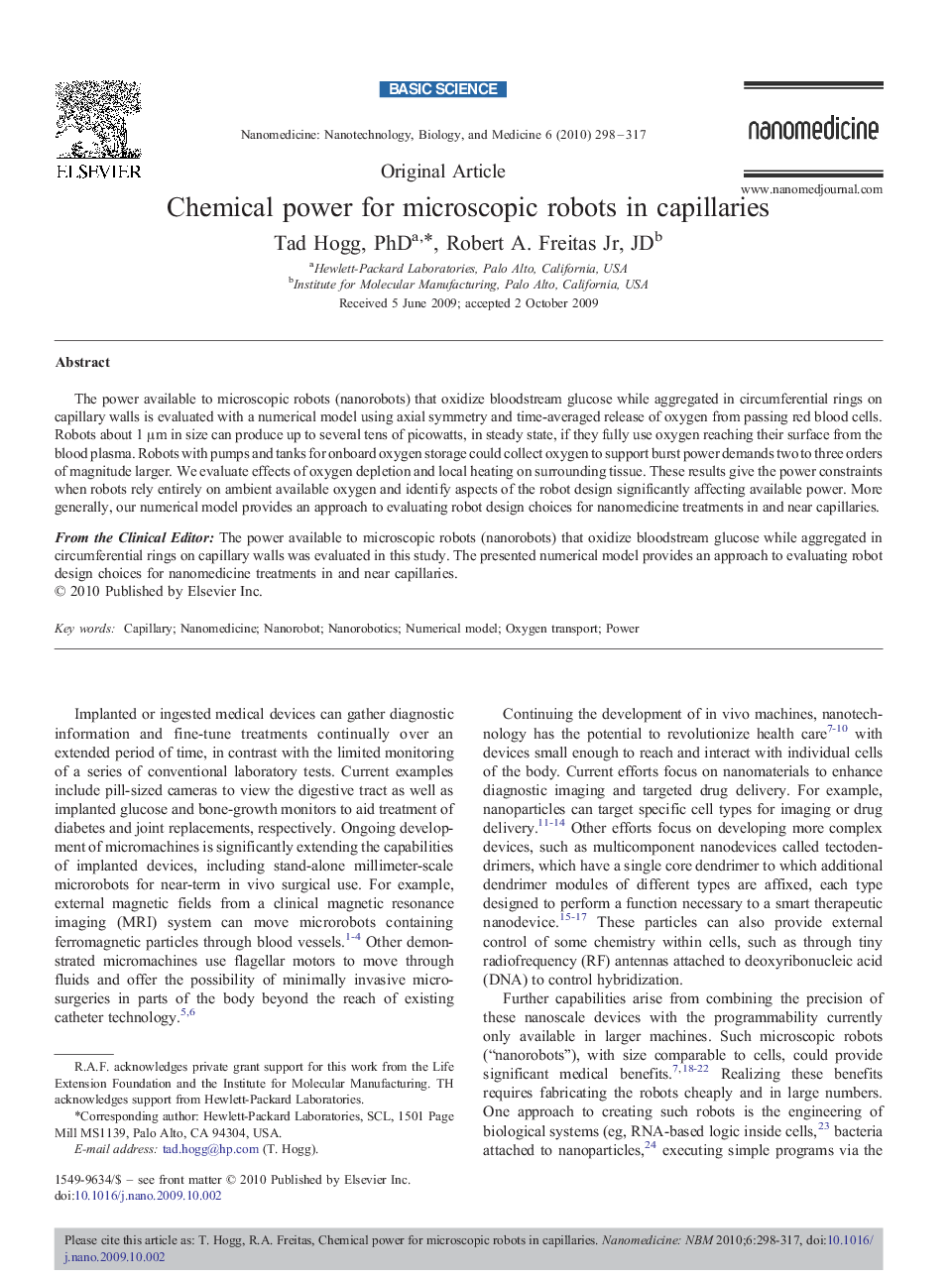| کد مقاله | کد نشریه | سال انتشار | مقاله انگلیسی | نسخه تمام متن |
|---|---|---|---|---|
| 878102 | 911061 | 2010 | 20 صفحه PDF | دانلود رایگان |

The power available to microscopic robots (nanorobots) that oxidize bloodstream glucose while aggregated in circumferential rings on capillary walls is evaluated with a numerical model using axial symmetry and time-averaged release of oxygen from passing red blood cells. Robots about 1 μm in size can produce up to several tens of picowatts, in steady state, if they fully use oxygen reaching their surface from the blood plasma. Robots with pumps and tanks for onboard oxygen storage could collect oxygen to support burst power demands two to three orders of magnitude larger. We evaluate effects of oxygen depletion and local heating on surrounding tissue. These results give the power constraints when robots rely entirely on ambient available oxygen and identify aspects of the robot design significantly affecting available power. More generally, our numerical model provides an approach to evaluating robot design choices for nanomedicine treatments in and near capillaries.From the Clinical EditorThe power available to microscopic robots (nanorobots) that oxidize bloodstream glucose while aggregated in circumferential rings on capillary walls was evaluated in this study. The presented numerical model provides an approach to evaluating robot design choices for nanomedicine treatments in and near capillaries.
Journal: Nanomedicine: Nanotechnology, Biology and Medicine - Volume 6, Issue 2, April 2010, Pages 298–317